Israeli Military Kills Hezbollah Deputy Commander In Lebanon
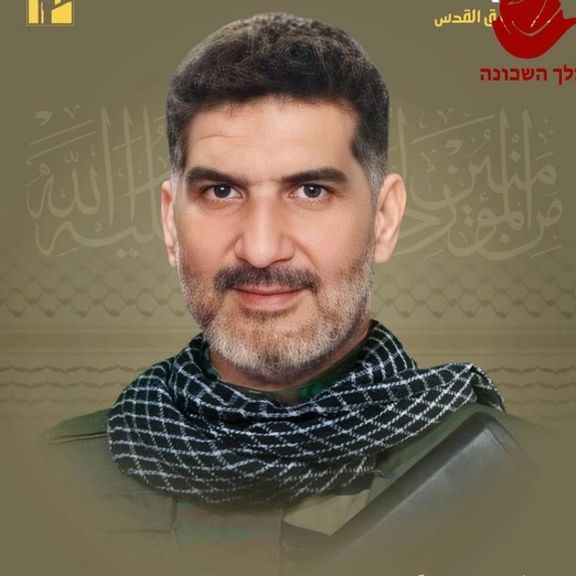
On Friday, the Israeli military said it had carried out an airstrike in southern Lebanon resulting in the death of Hezbollah's deputy commander.

On Friday, the Israeli military said it had carried out an airstrike in southern Lebanon resulting in the death of Hezbollah's deputy commander.
Ali Abed Akhsan Naim, the deputy commander of Hezbollah's rocket and missile unit, was killed in an IDF drone strike that targeted the car he was traveling in, in the town of Bazouriye.
Naim was “considered to be a significant source of knowledge in the terror group and leader in the field of rockets,” said Israel Defense Forces (IDF) in a statement.
The IDF added that Naim was one of the Iranian regime-backed militia's leaders in heavy warhead rocket fire and was responsible for conducting and planning attacks against Israeli civilians.
Hezbollah had announced Naim’s death earlier in the day but had not mentioned he was a high-ranking commander.
Separately, Israeli strikes on the northern Syrian city of Aleppo earlier on Friday killed 38 people – including five members of Hezbollah.
It reportedly marked the deadliest attacks so far in an intensified Israeli campaign against Iran's allies in Syria.
Following Hamas’ deadly incursion into Israel on October 7th, Israel has stepped up its airstrikes on both Hezbollah and the Iranian regime’s Islamic Revolutionary Guard’s positions in Syria
Tehran and its proxies have established strongholds across Syria, including in areas around Aleppo and the capital Damascus.
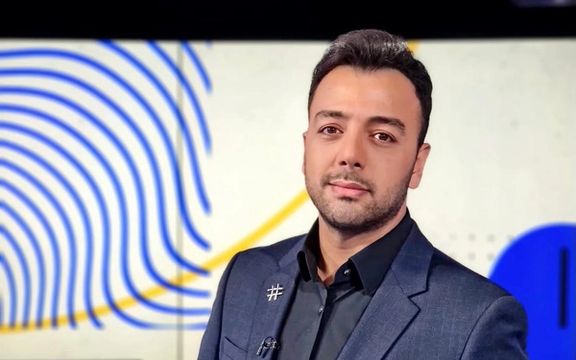
Pouria Zeraati, the television host of the "Last Word" program on Iran International, was attacked by a group of unidentified individuals as he exited his residence in London on Friday.
Zeraati, who was attacked in the early afternoon in south London, suffered knife wounds. He is in a stable condition, but remains hospitalized. The Metropolitan Police in London are conducting an investigation into the incident.
While the motive is unclear, the attack comes just a few months after a plot by the Iranian regime to kill 2 other Iran International journalists was revealed.
The Metropolitan Police in a statement said that "due to the victim’s occupation as a journalist at a Persian-language media organisation based in the UK, coupled with the fact that there has been a number of threats directed towards this group of journalists in recent times, the incident is being investigated by specialist officers from the Met’s Counter Terrorism Command."
A spokesman for Scotland Yard confirmed they were aware of the incident and were investigating. Although the motive for the attack remains unclear, it is understood that MI5 have been made aware.
Iran International’s journalists have long been a target by the regime for their coverage of Iran, and the platform it provides to critics and human rights activists.

In November 2022, the London Police provided protection to Iran International’s offices, acting upon credible intelligence about real threats against two of its journalists based in London.
In early 2023, the network had to temporarily shut down operations in London and move its broadcasting studios to Washington DC. In September of that year, operations resumed at a new location in London.
A man surveilling the previous London office was arrested by the police in February 2023. The Central Criminal Court of England sentenced him in December for gathering information on Iran International's London headquarters to 3.5 years behind bars.
Originally from Chechnya but residing in Austria, Magomed-Husejn Dovtaev (Mohammad-Hussein Dovtaev) was detained at Chiswick Business Park by officers from London’s Metropolitan Police Counter-Terrorism Command. He was charged with a single count of attempting to collect information "likely to be useful to a person committing or preparing an act of terrorism." The jury court returned a guilty verdict for him.
UK's National Union of Journalists condemned the attack on Zeraati. Michelle Stanistreet, NUJ general secretary, said, “This cowardly attack on Pouria is deeply shocking, and our thoughts are with him, his family and all of his colleagues at Iran International. We hope he makes a swift recovery...this brutal stabbing will inevitably raise fears amongst the many journalists targeted at Iran International and the BBC Persian Service that they are not safe at home or going about their work."
British MP and Chair of Foreign Affairs Committee Alicia Kearns said, "This is deeply upsetting, Iran International had to shut down its UK arm for a short period, it only recently returned to the air from London. Whilst we don’t know the circumstances of this attack, Iran continues to hunt down those brave enough to speak out against the regime. Yet I remain unconvinced that we and our allies have clear strategies to protect people in our countries from them, and protect our interests abroad."
In December 2023, UK’s ITV revealed that Iran’s Islamic Revolutionary Guard (IRGC) was plotting to assassinate two Iran International television anchors in London in 2022 amid Iranian anti-government protests.
The plan was foiled because the man hired to do the job turned out to be a ‘double-agent’ working for a western intelligence agency. He would relay all information to his handler, but then shared some details with ITV.
Based on irrefutable evidence – seen and verified by ITV and multiple officials– the plot was commissioned and signed off by Mohammad Reza Ansari, the IRGC commander in charge of assassinations outside Iran.
Ansari is the ‘mastermind’ behind failed plots to assassinate former US officials Mike Pompeo and John Bolton –for which he’s been sanctioned by the US treasury. He is based in Syria and is reported to have links with the family of the Syrian dictator Bashar al-Assad.
According to ITV, Ansari hired and directed the hitman (Ismail) through another Assad associate, Mohammad Abd al-Razek Kanafani, requiring him first to use a car bomb and then a ‘quiet’ way to kill his targets: “simply stab [them] with a kitchen knife.”
The plot was cynically codenamed the “wedding”. The targets, Sima Sabet and Fardad Farahzad, were “bride” and “groom”. They did not know about the details of the plot until told by ITV during the making of the report.

The news of Tehran regime’s military-industry complex showcasing its “Gaza” drone at Doha International Maritime Defense Exhibition and Conference (DIMDEX) surprised few industry observers.
Until DIMDEX entered the stage in 2008, Turkey’s Istanbul International Defense Industry Fair, “IDEF” (1993-present), UAE’s Abu Dhabi International Defense Exhibition, “IDEX” (1993-present), and Pakistan’s Karachi International Defense Exhibition and Seminar, “IDEA S” (2000-present), did enjoy unrivalled seniority over Qatar’s DIMDEX as regional biennial military exhibition hubs. But Iran’s effective “show” of its military hardware at DIMDEX 2024, the Qatari military exhibition just took the whole concept of arms deals and commerce to a grand new level.
Certainly, this is not Iran’s first rodeo at DIMDEX as the Iranian military industrial complex has been an enthusiastic participant at Qatar’s military expo for quite a few years. Since 2014, Qatar and Iran have become increasingly aligned in a cold war against Saudi Arabia and their military and security cooperation and sponsorship of non-state antagonists such as Hamas has bonded them in an unprecedented way.

From 2018 onwards, Iran has offered a far more diverse arsenal of missiles and drone technology at Qatar military expo. The Iranian military tech have passed muster in a half dozen proxy conflicts across the world over the past decade. The list is long and diverse. Ethiopia put Iranian drones in battlefield in Ethiopia-Tigray conflict with utmost effectiveness. Houthis use the same technology in their relentless and frequent assault on shipping lanes in the Red Sea. The very Iranian drones supplied to Iraqi-Shia militia have killed US service members in Jordan recently. The Hezbollah of Lebanon and Hamas use Iranian supplied drone technology against Israel. And last but not least, Putin’s Russia has unleashed thousands of Iranian Shahed suicide drones upon hundreds of thousands of Ukrainian civilians.
Since Apartheid South Africa, itself a major arms supplier and subject of multiple sanction regimes on an international scale by the 1980s, the Tehran regime has effectively beaten the multitude of sanction regimes imposed upon it by the Euro-American alliance. Whilst the Mullahs’ decades long deepening strategic entente with Russia and China has been fundamental to the success of their sanction thwarting measures, it is Western complacency that has arguably “enabled “the Iranian regime’s meteoric rise to its present “drone” mastery.

DIMIDEX has served the Mullahs in Tehran, their praetorian IRGC, and their proxy henchmen across the Middle East by leaps and bounds. Whilst DIMIDEX helped establish the Tehran regime as a competitively “affordable” and “lethally” reliable supplier of military drones, as well as missiles, in the era of post-Cold War “asymmetrical warfare”. More importantly, it has established Tehran as a global middle power with far reaching destabilizing potentials like no other.
The tale of the recent rise of a regime like the Islamic Republic of Iran that has been frequently called “rogue” by various members of the Euro-American alliance over the past forty-five years to such lethal and de-establishing pre-eminence was authored with the enabling hand of the combined EU-US diplomatic appeasement or practical complacencies. Also, increasing US isolationism in the aftermath of Iraq War, and the economic upheavals inflicted upon the West by the 2008 Great Economic Recession played a role.
Intervening catastrophic events, namely, the Arab Spring and the rise of ISIS, acted as a catalyst to catapult the Iranian regime to its present hegemonically destabilizing status. The advent of the Arab Spring, in tandem with President Obama’s phased withdrawal of the US troops from Iraq and his administration’s hesitation to intervene in Syria in the face of the usage of unconventional warfare by the Syrian regime against civilians, marked the beginning of the rise of the Iranian regime to this high station.
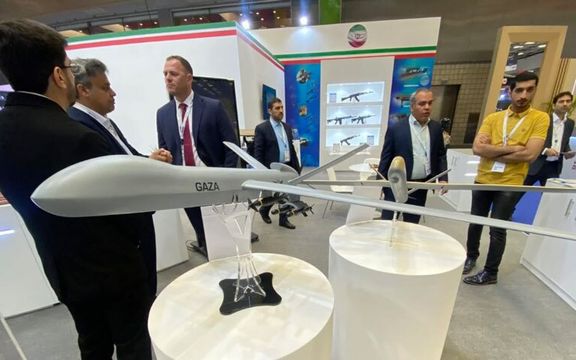
As ISIS emerged in the wake of Iraq’s sectarian conflict and the worsening of the Syrian civil war, Iran joined Russia to keep Assad in power in Syria and reinforced its proxy militias in Iraq. The IRGC under Qassem Soleimani began developing all manner of military hardware suitable for application in asymmetrical warfare like one waged by anti-Assad militia in Syria and ISIS across the region. By 2018, the Iranian drones rivalled the Turkish ones in the skies of Syria and became an indispensable strategic arm of Iraqi militia forces and Yemeni Houthi army. Certainly, rivalry with Saudi Arabia and the Gulf Cooperation Council states was a primary casus belli for the Iranian regime to ever fortify the Houthi arsenal with missile and drone technology.
Some could, and did, justify the Euro-American alliance’s appeasement and rapprochement with the Iranian regime that culminated to the 2015 JCPOA on grounds of “raison d’états”, namely, quelling ISIS. In fact, they went as far as likening such “expedient policies” to the Grand Alliance between the Anglo-American powers and Stalin’s USSR during WWII against Hitler. Yet, this invoked a bizarrely flawed historical analogy.
The Iranian regime was allied with Russia primarily to destroy anti-Assad Syrian rebellion, and ISIS was a bloody inconvenience that turned up amid such an intervention and was dealt with accordingly. In the course of their alliance, Iran and Russia partook in the massacre of hundreds of thousands of Syrian civilians and displaced millions of others, and they also quelled ISIS. The Russo-Iranian military alliance in Syria was thus not a benevolent humanitarian intervention. It was only akin to the Italo-German intervention on behalf of Franco’s fascists in the Spanish Civil War. In fact, such an exercise was precursor to, and did congeal, the later Italo-German military alliance as Axis against France and Britain in 1940.
Similarly, the collaboration between Iran’s IRGC and Wagner group during the Syrian Civil War consolidated the already deeply developed military industrial collaborations between the two countries; and drone development was one of many such collaborations. Against the backdrop of their earlier military collaboration in Syria, the Iranian drone contribution to Russia’s lethal operations against Ukraine was thus not an aid expected from a “client” of Russia but was an urgently needed assistance offered by “an ally” that had already showcased the usage of this technology against militants and civilians alike to their Russian partners in Syria.
Euro-American appeasement diplomacy vis-à-vis the Iranian regime continues to date despite the end of ISIS. EU and the US continued to subject the Iranian regime to “sanction regimes, threats and public chastening” but in effect have not deterred the regime effectively and concretely from its destabilizing practices.
Iran’s Shia Imperium have sent many shots across the Euro-American alliance’s bow in the region; some have even taken the life of US service members in the past six months. The recent March 19, 2024 Wall Street Journal’s reporting on EU-US rift over sanctioning Iran for weapons transfers in the Middle East is illustrious of the European pathological enabling of the Iranian regime’s military industrial complex; an enabling appeasement diplomacy that has imposed high energy costs for average European households with inflationary results and led to catastrophic consequences for millions from the Russo-Ukrainian war front to the troughs of Bab-al-Mandab and the Red Sea.
EU diplomacy, which might as well be dubbed “Borrell’s diplomacy”, is symptomatic of a deep-seated complacency in the attitude of the Euro-American alliance towards the Iranian regime. Whilst Biden administration turned a blind eye to Iran’s surging oil exports to China, both the US (under successive Obama, Trump, and Biden administrations) and EU were guilty of willful blindness towards Iran on the transfer of UAV parts and academic knowhow to Iran.
Roughly a month ago, it was revealed that US, UK, and Australian universities were involved in drone technology research with top Iranian technology universities. Just three days before the publication of the Guardian report of the Western-Iranian academic collaboration on drone technology, Iran International published its own investigative report that reveled the Euro-American complacency allowed Iran to import drone parts since at least 2014. The Guardian of London, which was once owned and published by the renowned liberal C.P. Scott, has got it wrong when it declaims “how Iranian-supplied drones are changing the nature of warfare”. The article should have been befittingly rephrased: “How Iranian-supplied drones, unenforced sanctions, and appeasement helped a ‘rogue’ regime become a destabilizing global middle power”. Iran’s “Gaza” drone at DIMIDEX was simply “proof that is in the ‘Iran’s UAV technology’ pudding”.
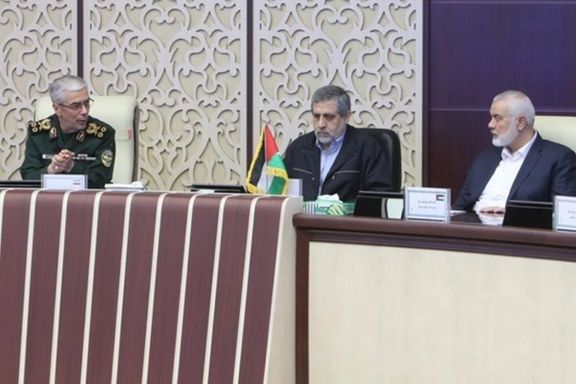
In a widely-watched encounter with Hamas' leader in Tehran, Iran's top military commander vowed unyielding support for the Palestinian cause, declaring Tehran's commitment to back it "with all its might."
Mohammad Bagheri, Iran's Chief of Staff of the Armed Forces, conveyed admiration to Hamas' leader Ismail Haniyeh and described Hamas' October 7 attack on Israel as "unprecedented, exceptional, and highly successful."
Bagheri congratulated Haniyeh for “having such planners and martyrdom-seeking fighters” further adding that Hamas’ operation “elevated the Palestinian cause to the forefront not only within the Islamic world but on a global scale".
The country’s top military commander also condemned US support for Israel, by saying that without Washington’s help, the “Zionist regime” would have already “collapsed” by now.
Haniyeh has been in Tehran since Tuesday, meeting with top Iranian officials. Among them was the country’s ruler, Supreme Leader Ali Khamenei, who assured the Hamas leader of Iran's steadfast commitment, stating, "the Islamic Republic of Iran will not hesitate in supporting the cause of Palestine”.
When Iran-backed Palestinian terrorist group Hamas attacked Israel on October 7th, 1,200 civilians were killed and 240 hostages were taken to Gaza. It marked the deadliest day for Jews since the Holocaust.
The Iranian regime swiftly praised the attack and orchestrated street celebrations, with large banners hung within hours. Some view this as a potential indication that Tehran had prior knowledge of the operation, a claim reported by the WSJ, although the US, Israel and Iran have denied it.
In 2015, the Supreme Leader declared that Israel must be eradicated within 25 years. The regime went as far as setting up a kind of “countdown clock” in Tehran and a few other cities.
Authorities have consistently emphasized the imperative of "Israel's destruction," a mantra used to justify Iran's extensive financial and military backing of militant groups like Hamas and Hezbollah – all the while, Iranians are confronted with mounting poverty and a bleak economic future for their country.
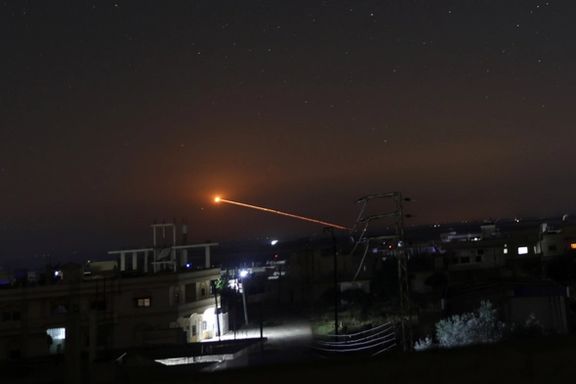
Israeli strikes on the northern Syrian city of Aleppo early on Friday killed 38 people, including five members of Lebanese armed group Hezbollah, two security sources said.
The Syrian defense ministry said earlier on Friday that a number of civilians and military personnel were killed after Israel and militant groups launched attacks against Aleppo.
The Israeli airstrikes targeted several areas in Aleppo's countryside at about 1:45 a.m. local time (2245 GMT), the ministry said a statement.
The airstrikes coincided with drone attacks carried out from Idlib and western rural Aleppo that the ministry described as having been conducted by "terrorist organisations" targeting civilians in Aleppo and its surroundings.
However, the ministry did not mention a specific death toll or clarify whether the casualties were caused by the Israeli airstrikes or the attacks by militant groups.
"The aggression resulted in the martyrdom and injury of a number of civilians and military personnel and caused material losses to public and private property," the statement said.
The Israeli military declined comment.
Since the October 7 attack by Hamas on Israeli civilians and soldiers, Israel has escalated its strikes on what it says are bases of Iranian-backed militia in Syria. It has also struck Syrian army air defences and some Syrian forces.
Israel has for years carried out such attacks in Syria, where Tehran's influence has grown since it began supporting President Bashar al-Assad in a civil war that started in 2011.
Fighters allied with Iran, including Hezbollah, now hold sway in vast areas of eastern, southern and northwestern Syria and in several suburbs around the capital.
Israel and Hezbollah have been trading fire across the Israel-Lebanon border since the war erupted in Gaza, the biggest escalation since they fought a month-long conflict in 2006.
(Reporting by Reuters)
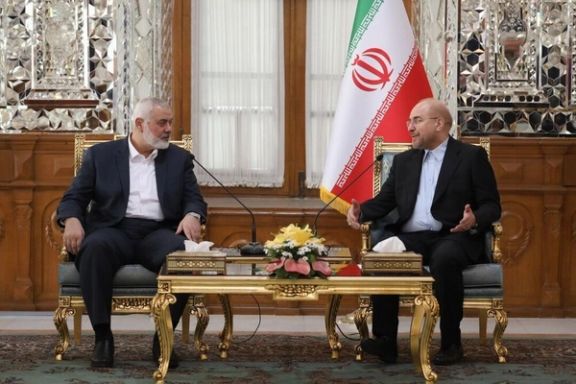
Ismail Haniyeh, the head of the Hamas political bureau, has met with Iran’s Parliament Speaker Mohammad Bagher Ghalibaf during his visit to Tehran, the latest in a string of high level meetings amid the war in Gaza.
"The issue of Palestine is one of the current concerns of the Iranian Supreme Leader. Therefore, we also support you in the parliament and provide the necessary support to the resistance front," Ghalibaf said during the meeting, Ali Khamenei having given birth to Iran's proxy militias around the Middle East.
"In addition, the support of other forces of the resistance front, especially Lebanon and Syria, in the fight against the Zionist regime, was very important," he added, referencing the attacks on Israel launched on other fronts, not only from Gaza by Hamas.
In 2018, US President Donald Trump’s special Middle East envoy Jason Greenblatt, claimed Iran provided $100 million annually to Hamas compared to $700m annually to Hezbollah.
Haniyeh, who arrived in Iran on Tuesday, held talks with key Iranian officials, including Supreme Leader Ali Khamenei, and Foreign Minister Hossein Amirabdollahian.
Ziyad al-Nakhalah, the Secretary-General of the Islamic Jihad Movement in Palestine, also met with Speaker Ghalibaf on Thursday. He also held a meeting with Khamenei on Thursday.
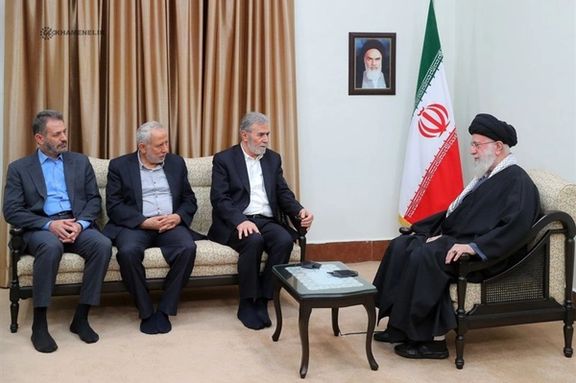
The meetings come against the backdrop of a recent United Nations Security Council resolution calling for an immediate ceasefire in Gaza, where Hamas has been engaged in conflict with Israel following its invasion of the Jewish state on October 7, killing 1,200 mostly civilians and kidnapping more than 250 others.
Haniyeh's visit marks his second trip to Iran since the outbreak of the war, the worst Gaza conflict since Hamas took control of the strip in 2007. Hamas claims around 32,000 people have been killed in Israel's retaliatory attacks in its bid to eradicate the terror group and rescue the remaining hostages.
While Lebanon’s Hezbollah is by far Iran's richest and most powerful proxy, the combined funds of the Palestinian Islamic Jihad Movement, Hamas and the Popular Front for the Liberation of Palestine are enormous, Hamas and Islamic Jihad receiving a large share of Tehran’s aid.